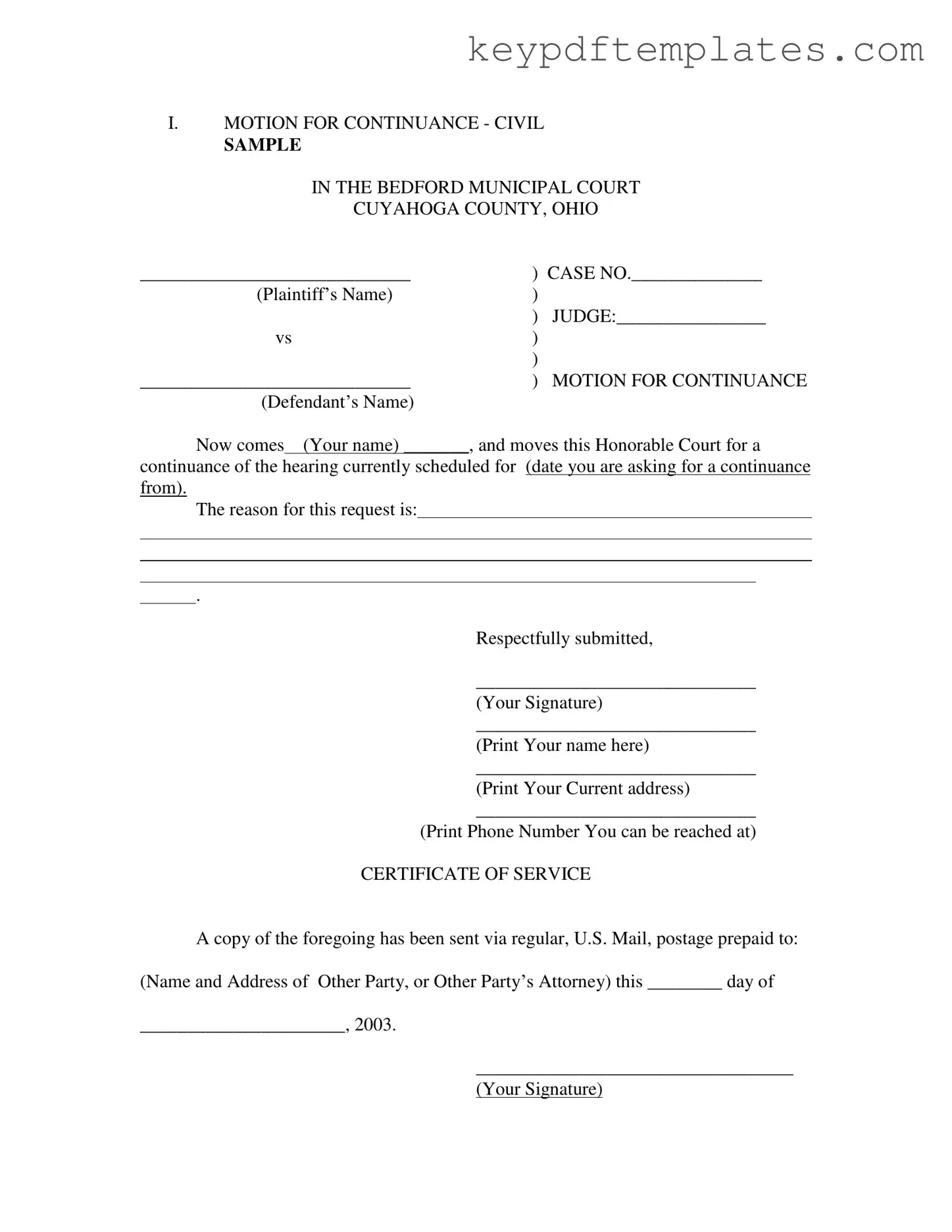Get Motion For Continuance Form
The Motion For Continuance form is a legal document used to request a delay in court proceedings. Typically submitted to a court, this form outlines the reasons for seeking additional time before a scheduled hearing. Understanding how to properly fill out and submit this form can significantly impact the outcome of a case.
Modify Document Online
